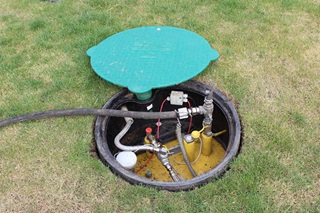Underground Propane Tanks: A Comprehensive Guide

Underground propane tanks are specially designed storage containers that are buried beneath the ground to store propane gas for residential, commercial or industrial use. These tanks offer an aesthetically pleasing alternative to above-ground tanks, providing a seamless look while maintaining a reliable supply of energy.
The cost of installing an underground propane tank can vary based on several factors, including the size of the tank, the complexity of the installation and local regulations. Additional costs might include permits, excavation and landscaping.
To get an accurate quote tailored to your specific needs, contact our sales team. Our representatives will help you determine the best tank size and features for your requirements
Installing an underground propane tank involves several steps:
Several specific requirements must be met for the installation of an underground propane tank. These include:
Proper maintenance is essential for the longevity and safety of your underground propane tank.
With proper maintenance, they can have a lifespan of 20 to 30 years or more. Regular inspections and maintenance are vital to extend the tank's life and ensure safety.
Regularly inspect your propane tank for signs of wear and tear, which can include rust formation, dents, or visible damage to the tank’s structure. Discoloration or fading paint can also indicate exposure to extreme conditions that might compromise the tank's integrity. It’s crucial to monitor the areas around valves and connections for any signs of leaks or corrosion.
To ensure the safety and efficiency of your propane tank, adhere to the following maintenance tips:
Pinnacle Propane customers can schedule annual inspections to ensure their tanks are in optimal condition. Pinnacle adheres to strict inspection guidelines to maintain safety and compliance with regulatory standards. Additionally, we offer information on replacement costs and details about warranties for our tanks, ensuring that customers understand their options should a tank require servicing or replacement. It's always a good idea to contact us directly for the most accurate and detailed information regarding specific services and policies. This will help ensure that your propane needs are met safely and efficiently.
Choosing between an above-ground and an underground propane tank depends on several factors, including budget, space and aesthetic preferences.
Yes, underground propane tanks are safe when installed and maintained correctly. They are less exposed to environmental hazards and potential vandalism, making them a secure choice for many homeowners and businesses.
Underground propane tanks offer a discreet and efficient solution for storing propane gas, making them an attractive option for homeowners, large businesses and everything in between. By understanding the costs, installation requirements and maintenance needs, you can make an informed decision that best suits your needs. Contact us today for more information on underground propane tank installation and to schedule a consultation with our experts.
